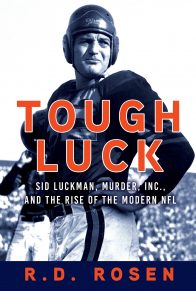It has been said that Anglo-Americans were the last people to arrive in the West. Even if we except the three million or so Native Americans who occupied most of the two million square miles between the Mississippi River and the Pacific, the British had penetrated the Oregon Territory from Canada in the north, the Spanish had occupied Arizona, New Mexico, Texas and California as part of colonial New Spain, and the Russians and even the Chinese had made the journey from the east to the Pacific seaboard. Until the 1840s, the West was a backwater in the life of the United States. Even in 1845, when emigration to California and Oregon had already begun, fewer than 20,000 whites lived west of the Mississippi, if we exclude the (then) still independent state of Texas.
The Spanish had been in Texas and Arizona intermittently since the days of Juan Coronado and the conquistadores in the sixteenth century, but found the territories difficult to settle because of the hostility of Indian tribes, especially the formidable Comanche.
This was the origin of the fateful decision to admit Anglo colonists to Texas after 1821, when Mexico gained its independence from Spain. Stephen Austin completed his father Moses’s groundwork by founding the first colony of three hundred American families, each of whom received one square league of free land in return for taking an oath of allegiance to the Mexican government. The colony of San Felipe de Austin numbered 2,021 souls by 1824. Further land grants meant that by 1835 there were nearly 30,000 Americans living in Texas as against just 3,500 Mexicans. The seeds of future trouble were obviously present.
The Spanish had more success in New Mexico. By 1827, with 44,000 inhabitants, the territory had ten times the population of California or Texas. New Mexico, a land riven by grotesque social inequalities, drew its wealth from sheep-rearing and mining: millions of sheep grazed the upper valley of the Rio Grande between El Paso and Taos while the mines of south-western New Mexico churned out a thousand tons of copper a year; south of Santa Fe there were also rich-yielding gold mines. The territory’s chief drawbacks, apart from its corrupt and archaic administration, were the old-fashioned mercantilist economic policy carried out there, and the lack of a seaport: the nearest maritime outlet was faraway Vera Cruz, 2,000 miles distant on mountain tracks. But, in contrast to Arizona, New Mexico was a prize worth saving, which was why, in the 1820s, the Mexican authorities opened up this previously closed economy to trade with the USA.
California, colonised by the Spanish as late as 1769, and only then in response to feared Russian encroachment from the north, was another sleepy backwater, whose main feature was the string of twenty Franciscan missions established from San Diego in the south to Sonoma in the north. But in the early nineteenth century a new power had interposed itself between Spanish California and Russian Alaska. Through the Hudson’s Bay Company, Britain controlled the territory from 54″ N40′ (roughly where the present state of Alaska sweeps down to meet British Columbia near Queen Charlotte Islands) to the present Oregon-California border. From the company’s north-western headquarters at Fort Vancouver on the Columbia River, the British dominated the lucrative fur trade. The company’s position was a strong one, for Fort Vancouver could be supplied and reinforced from Vancouver and most of the local Indian tribes were friendly.
US interest in the Far West really began with the Lewis and Clark expedition and the architect of this was the much maligned US president Thomas Jefferson. When Napoleon’s dreams of an American empire faded with the defeat of his forces in Haiti in 1803, he sold the massive French holdings in North America – the so-called Louisiana Territory -to the United States. For $15 million, Jefferson bought 800,000 square miles between the Mississippi and the Rockies, and doubled the size of his country. At the same time, he asked Congress for the funds to send an expedition to explore his new acquisition and to continue on to the Pacific. Meriwether Lewis, an army captain, was appointed as expedition leader, but he shared the leadership with his friend Lieutenant William Clark. Leaving Missouri in May 1804, Lewis and Clark reached the Mandan territory of North Dakota in late October and spent the winter there. In April 1805, they resumed their journey and followed the headwaters of the Missouri to, successively, the Clearwater, Snake and Columbia rivers. Rafting down the Columbia, they reached the Pacific in early November. They wintered at Fort Catslop (which they built) and began the homeward journey in late March 1806. They returned via the Yellowstone and upper Missouri, reaching St Louis late in September 1806, after an absence of two years and four months.
The United States did not immediately follow up on the Lewis and Clark expedition. Exploration of the vast area between the Mississippi and the Pacific was largely the work of the ‘mountain men” who, between 1820 and 1840, reconnoitred the routes that would later be recognised as the Santa Fe, California and Oregon trails. Living beyond the pale of civilisation, often with Indian wives and thus linked by kinship to the potentially hostile tribes, the mountain men had their own way of life and even their own canting argot. Among them were some of the most famous names of the old West – Kit Carson, Jim Bridger, Joseph Walker, Jedediah Smith, Thomas “Pegleg” Smith, Caleb Greenwood, Thomas Fitzpatrick and the Sublette brothers.
The mountain men made their living trapping beaver, for the fur trade was the salient fact of economic life in the West c. 1820–40. At first, the fur trade was a three-way commercial contest between the British-chartered Hudson’s Bay Company, operating in the Oregon territory, the Rocky Mountain Fur Company, whose operatives used Taos in New Mexico as its jump-off point, and the American Fur Company based in St Louis. In the early days, the Hudson’s Bay Company trapped along the Pacific Rim while the other two disputed the interior, but after 1830 the Hudson’s Bay Company expanded inland, complicating the situation. The American Fur Company won its long battle with the Rocky Mountain Fur Company, but was about to succumb to the greater resources of the Hudson’s Bay Company when the fur trade itself came to an abrupt end: in their competition mania, the mountain men had all but exterminated the beaver. But the indirect consequences of the fur trade era were incalculable. The mountain men, seeking new employment, were able to guide the first wagon trains of emigrants along trails they themselves had pioneered. And throughout the 1830s they brought back letters and travellers’ tales from California and Oregon, thus acting as transmission belts in the spreading of knowledge about the West.
Mountain men apart, until the late 1830s the only other significant white American presence west of the Mississippi (always excepting the special case of Texas) was that of missionaries. In 1833, the Methodists established their first mission in the Oregon territory under the Reverend Jason Lee. Dr John McLoughlin, chief of the Hudson’s Bay Company in Oregon, did not want Americans north of the Columbia River, so steered them towards the fertile Willamette valley; the Methodists accepted the suggestion, but set up a branch office at the Dalles on the Columbia. Stung by the success of the Methodists, the Presbyterians sent out their own missionaries in 1835. Accompanied by Dr Marcus Whitman, the Reverend Samuel Parker reconnoitred the Oregon territory and decided that his denomination’s missions would be in eastern Oregon, at Waiilatpu, among the Cayuse Indians, and at Lapwai, among the Nez Perc”. Warnings from McLoughlin about the danger of working with such warlike tribes went unheeded.
Parker and Whitman returned east by ship. In the spring of 1836, Whitman set out for Oregon again. But his situation was difficult. Because the American Board of Commissioners for Foreign Missions, fearing the miscegenation and “immorality” of the mountain men, would send only married couples to work among ‘savages’, Whitman had to find a wife. He found one in the twenty-eight-year-old Narcissa Prentiss, a dedicated New York Presbyterian. Whitman married her in February 1836 after returning from his first trip to Oregon with Samuel Parker. But there was a complication. Accompanying Whitman to Oregon was another missionary, Henry Spalding, who had earlier been rejected by Narcissa when he proposed marriage. By now Spalding had made a marriage of convenience, so he and his wife joined the Whitmans for an embarrassing and uncomfortable journey into the unknown. Some historians have speculated that many of the later difficulties between Spalding and Whitman can be traced to Narcissa’s initial rejection. There were other problems on the journey, as Thomas Fitzpatrick, leading a party of fur traders into the interior, did not want to take the missionaries along, fearing that their wives would be targeted by the Indians. He tried to slip away unnoticed, but the intrepid Whitman caught up with his party in a series of forced marches.
By becoming the first white women to cross the Rockies, Narcissa Whitman and Mrs Henry Spalding proved that the way west was feasible for women and children. The Whitmans set up their mission station at Waiilatpu, near modern-day Walla Walla, Washington, while the Spaldings settled at Lapwai, near present-day Lewiston, Idaho. Narcissa became one of the great characters of the early West, “vivacious, attractive, gregarious, idealistic and sentimentally religious’, as she has been called. But the Presbyterians made few converts. The Cayuse and Nez Perc” were interested only in what benefits they could winkle out of the white men and accordingly merely feigned interest in Christianity. Spalding wrote in despair: “I fear that they will all prove to be a selfish, deceptive race of beings.” But the missionaries sowed seeds that would germinate later. President Andrew Jackson sent an agent out to investigate missionary endeavour in Oregon. William Slocum’s report, enthusiastically stressing the potential of the Oregon territory, interested Senator Lewis Linn of Missouri, who soon began to lobby for US annexation of the territory. And the existence of the missions encouraged a trickle of early settlers: fifty-one to Jason Lee’s Methodist foundation in the Willamette valley in 1839, many more in 1840. By the end of that year, there were already five hundred whites in the Willamette valley.
Such was the context for the first wagon train emigration of 1841. The 1840s was, in economic terms, an odd decade, wedged between the fur trade bonanza years of 1820–40 and the gold rush of 1849 and the subsequent inland mining boom era. Almost by pre-established harmony, the last great annual market or rendezvous of the fur trappers took place the year before the first wagon train set out. The other peculiarity of the 1840s was that the United States suddenly became an aggressive, expansionist nation. Pace the historian Bernard de Voto, some say that America’s real “year of decision” was 1844 not 1846. The election of James Polk that year as US president gave the green light for a process that would, four years later, see all of Mexico north of the Rio Grande and all the Oregon territory south of the forty-ninth parallel of latitude in US hands. The watchword was sounded by the editor of the New York Morning News, John L. O’Sullivan, who wrote in December 1845 that it was the ‘manifest destiny” of the United States “to overspread and to possess the whole of the continent which Providence has given us for the development of the great experiment of liberty and federated self-government entrusted to us’.
Manifest Destiny was a peculiar mixture of assertiveness and fear, of ideology and crude political calculation. Economic motives such as the export of surplus capital or the acquisition of new markets do not seem to have played a primary role. Ideologically, the notion of Manifest Destiny can be seen as a weird mixture of evangelical Protestantism, ultramontane republicanism and Hegelian philosophy. History, as in Hegel’s system, had a purpose or destiny, and Providence had obviously chosen the United States as its vessel. Since the white race was self-evidently superior to the black, the red or the Hispanic, only the lily-livered or the cretinous would draw back from fulfilling the obvious design of the transcendent order, whether this was called God, Spirit or Providence. There has always been a strand in US republican thought that has emphasised continual expansion as the only way to preserve the peculiar virtue of republicanism, just as there has always been a countervailing strand that stresses that expansion or foreign adventures pervert the sanctity both of republican virtue and of Providence’s mandate itself.
But Manifest Destiny was not a product of pure ideology. Alongside these “positive” aspects, at least two negative facets should be noted. Some historians see fear of foreign nations, and especially Britain, as the real impulse towards expansion. British meddling in California and Texas was particularly resented, and the fear was that, if the United States did not move quickly to annex the territories north of the Rio Grande held in Mexico’s grasp, some other nation, probably Britain, would acquire them. Even if former Spanish territories were not added to the British Empire, London could maintain them as independent states, as a curb on American economic ambitions; both Britain and France looked on Texas as a profitable target for markets and investment. Alongside this was a desire for expansion by southern slave-owning states, fearful that the balance of power in the United States was swinging away from them. The incorporation of slave-owning Texas would be a powerful brake on the ambitions of the abolitionists. Even those who wavered were won round by scare stories about British desire to abolish slavery worldwide.
So, for their own reasons, Southerners who might otherwise have been disposed to oppose Polk supported him. But whatever the explanation of Manifest Destiny (and it continues to be disputed), the spectacular results could scarcely be doubted. Alongside the earlier settlement of the Oregon Question, the 1848 Treaty of Guadalupe Hidalgo, which sealed the US victory in the Mexican War, added 1.2 million square miles to the United States, out of which would arise the states of California, Oregon, New Mexico and Arizona, as well as much of Nevada, Utah and Colorado. Polk’s aggression had secured an increase of 66 per cent in the nation’s size.
In subtle ways, Manifest Destiny was important as an ideological support for the pioneers who struck west in their wagons in the 1840s. Just as the Boers and Mormons trekked into the wilderness with a conviction that God was on their side, so the emigrants could feel they were caught up in a movement of inevitability, that they were history’s “winners’. Racial prejudice and a feeling of cultural superiority were important aspects to this. The traveller Walter Colton is eloquent on the sentiments of cultural and ethnic superiority, when he describes the California pioneers: “They seem to look upon this beautiful land as their own Canaan, and the motley race around them as the Hittites, the Hivites, and the Jebusites, whom they are to drive out.” Everything they heard and read convinced the wagon train emigrants that right, justice and the main historical currents were on their side. John O’Sullivan reassured them: “There is in fact no such thing as title to the wild lands of the new world, except that which actual possession gives. They belong to whoever will redeem them from the Indian and the desert, and subjugate them to the use of man.”
Thereafter, the would-be emigrant had just two main decisions to make: which route should he follow; and was the “pull” of the Pacific sufficient to draw him out of the farmlands of the Midwest?
Wagons first went west on the Santa Fe Trail from Missouri to Santa Fe, and the trail itself was born in the very year of Mexico’s independence from Spain, in 1821. But it took twenty years for the first emigrants to reach California from Missouri via the Santa Fe Trail. There is an interesting historical ‘synchronicity” here. It took twenty years from the time the British acquired the Cape Colony to the moment (in 1836) the first Boers trekked west and north out of the colony in search of the promised land. The great migrations in South Africa and North America were virtually simultaneous events. But overland migration in the southwest proved a false dawn. The Santa Fe Trail is important in the story of the wagon trains mainly as (literally) the road not taken. Why it was not taken is important to establish, for in this case the flag most certainly did not follow trade.
By the late 1820s the route from Independence, Missouri, to Santa Fe was well trodden. The trail ran to the Arkansas River, then traversed the arid Cimarron Desert before debouching on the Cimarron River; thereafter there were crossings of the Canadian and Pecos rivers before the settlers could ascend the Glorieta Pass and then make their way down to the town of Santa Fe, eight hundred miles from Independence. On this itinerary, the intricacies of travel by wagon were first mastered and valuable lessons learned which the pioneers on the later Oregon and California trails would take to heart. But the journey was dangerous, for it crossed the hunting grounds of the Arapaho and the Comanche, the ‘spartans of the plains’. So serious did Comanche depredations on the wagon trains become that in 1829 the US Army found itself fighting a long and difficult campaign against these Indians. It was their mixed fortune that was the genesis of the famed US Cavalry, for Washington soon decided that using infantry against mounted warriors on the great plains was consummate idiocy. That same year, the Mexicans pioneered a trading route between Santa Fe and Los Angeles in California. There already existed an Old Spanish Trail, which ran north-west from Santa Fe, across the continental divide in northern New Mexico, into the Rockies at Colorado, then, after fording the Green and Colorado rivers above their junction, looped round the northern rim of the Grand Canyon into Utah, creeping south-west through the deserts of Nevada and California to Los Angeles. But the Old Spanish Trail was an impossibly roundabout route. Traffic in trade goods between New Mexico and California began only when Antonio Armijo blazed a new trail in 1829–30. Starting from Santa Fe on 6 November 1829, Armijo, with thirty companions, followed the Old Spanish Trail north-west only as far as Abiquiu, then cut almost due west to the Four Corners region near Mesa Verde and proceeded via the Goose Neck gorge of the San Juan River to the so-called “Crossing of the Fathers’ – the series of man-made stone steps at the Colorado River north of the Grand Canyon where the Franciscan fathers Dominguez and Escalante had made the crossing in 1777.
After fording the Colorado with great difficulty on 6 December, Armijo’s band reached the Virgin River on New Year’s Day 1830 about a hundred miles north of present-day Las Vegas, Nevada, then survived the Mojave Desert by eating mule and horse flesh and arrived at the San Gabriel mission about fifty miles east of Los Angeles on 31 January; they had thus completed the journey in less than three months. Even though they had killed some of the pack animals, they arrived in California with most of their mules still loaded with serapes, blankets, quilts and other woollen goods, which they traded for mules and horses from the Californian ranches. The expedition did even better on the return journey: Armijo’s flying column got back to Santa Fe in forty days and Armijo himself on 25 April, after a two-month trip that saw him robbed by the Navajo Indians.
Every year thereafter, a mule train picked its way across the continent from Santa Fe to Los Angeles, thus in effect extending the Santa Fe Trail so that it ran from Missouri to California. Apart from the occasional raid by the Navajo, these trains fared better in terms of Indian attacks than the wagon trains on the Santa Fe Trail proper, to the point where Mexican traders took their wives and children along with them. Silver, woollen goods and blankets went to California, whence the intrepid merchants brought back horses and mules and even luxury items that had arrived in Californian ports from China and New England. Americans entered the horse-trading business in California and emulated the Mexicans by driving livestock back to Santa Fe; soon they were taking mules and horses all the way from California to Missouri. The new trails had become genuine extensions of the Santa Fe Trail and thus, potentially, an emigrant route lay open from the Midwest to the Pacific.
The 1830s was a troubled decade in the south-west. Massive Anglo-Saxon immigration into Texas led to calls for the state’s independence and for an immediate military solution from men like William Barret Travis, who soon eclipsed the gradualists led by William Austin. Events played into Travis’s hands. The hardliner Antonio de Santa Anna became dictator of Mexico and tried to bring his recalcitrant northern province to heel. The result was war: the heroism of the Alamo, the grim massacre of Goliad and finally Sam Houston’s victory over Santa Anna at San Jacinto in 1836 which secured Texan independence. The hero of the hour became the president of independent Texas, but was succeeded by Howard L. Lamar, who pursued a “forward” policy aimed at the annexation of New Mexico and the acquisition of the Santa Fe trade. There were numerous skirmishes and minor battles between Texans and Mexicans in New Mexico and by 1841 the two infant republics were once again on the brink of all-out war. This was the tangled context in which the first American emigrants came to California. In September 1841, William Workman and John Rowland led a party of twenty-five along the Old Spanish Trail, from Santa Fe to California. Workman and Rowland were secret supporters of the Anglo-American faction in New Mexico that wanted the territory annexed by Texas and had been in correspondence with the plotters in Austin; there is even a suspicion that it was their intercepted letters that alerted the Mexicans to the conspiracy at an early stage. When Workman and Rowland’s “treachery” became known, there was a move among Mexican patriots to lynch them, narrowly prevented by Armijo’s personal intervention. Nonetheless, the writing was on the wall: it was no longer safe for Workman, Rowland and their American associates to remain in New Mexico. They laid plans for an overland trek to California.
Workman was a forty-one-year-old native of Cumberland, England, who after coming to America spent some time as a trapper before settling down with a Mexican wife, as a storekeeper and naturalised Mexican citizen in Taos. Rowland, a Pennsylvanian, had a similar background except that he had a more extensive history of Indian fighting and was a more successful businessman, having diversified into the flour and distillery business. The two gathered together a small party of emigrants, mainly Americans who had been living for some time in New Mexico, together with a few new arrivals from the Santa Fe Trail. All twenty-five men were either professionals or skilled craftsmen, except for a French Creole gambler named Tibeau (or Tiboux). The emigrant party could boast two physicians, a naturalist, a mineralogist, an engineer, a musician, a tailor, a gunsmith, three carpenters, two coopers and a blacksmith; there were also two native New Mexicans, the only ones in the party to take families.
Some historians of the Old Spanish Trail claim that the crisis of 1841 was the occasion rather than the cause of Rowland and Workman’s departure from New Mexico, that they had been planning to leave the territory long before the crisis with Texas, but that the tension of that year gave them the final nudge. This interpretation would explain how the men were able to liquidate their assets in real estate so rapidly and turn them into cash and livestock. Certainly, there was no sign of money shortage at the beginning of the journey. At Santa Fe, they took on supplies of flour, hard tack, dried and jerked beef and buffalo meat. Following Armijo’s 1829–30 route they travelled north-west to Abiquiu, where they bought 150 sheep and employed local drovers for the journey. The prosperity of the emigrants is casually indicated by the number of Mexican servants they employed in the village. Some of the travellers were amazed to find the Mexicans prepared to follow them into the unknown with just an hour’s notice; standard pay for the trip was two dollars, issued together with a set of Californian clothes on arrival.
The emigrants had a stroke of luck just before heading out into the wilderness. The Mexican Secretary of State was at first inclined to make a clear distinction between loyal and treacherous Anglo-Americans in Mexican territory, but in September 1841 he finally concluded that the first loyalty of gringos would always be to Texas or the United States. He therefore issued an order prohibiting foreigners from leaving their places of residence. The decree reached Abiuquiu only days after the Workman party had left; they quit the village in the first week of September. After Abiuquiu, they took the classic northerly route of the Old Spanish Trail – a more roundabout journey than Armijo’s. Travelling north-west, they hit the Colorado River just below the mouth of the Dolores (near present-day Moab), then crossed the “Great American Basin” to the Sevier River. At first the going was easy, with plenty of ice-cold water trickling down from the mountains and rich pasturage for the animals. But then the landscape gradually became more arid and sterile, and the going difficult, across treeless wastes striated by ravines.
At the Sevier they swung sharply south-west to the Virgin River (passing close to present-day St George), and followed this down to the Colorado. The next obstacle was the Mojave Desert, where there was no water, the sands drifted frighteningly and the route was littered with the carcasses of horses that had perished on previous attempts to cross this Sahara of the West. Because of the lack of moisture in the atmosphere, the flesh of the dead horses had not rotted but rather mummified as if embalmed. Finally, they completed the crossing of the Mojave and proceeded through the Cajon Pass to San Bernadino, and thence to Los Angeles, which was reached in early November, eight weeks out from Santa Fe. The Mexican authorities, alerted to the coming of the Americans by the regular annual Spanish Trail caravan, rode out to inspect the new arrivals but found them of good character. Evidently, Armijo in New Mexico had not complained to his counterpart in California or, if he had, his words were disregarded. Workman’s explanation for their emigration, that they had grown tired of Comanche depredations in New Mexico, was found totally satisfactory.
The successful Workman-Rowland emigration should on paper have opened up an obvious conduit for emigrants from Missouri, for by now both the Santa Fe Trail and the Old Spanish Trail were well-trodden pathways. Yet until the California Gold Rush of 1849, the route to the Pacific through the south-west remained a dead letter. Why was this? Why were wagon trains destined to settle Oregon and California only by the more northerly Oregon and California trails? This question seems at first sight difficult to answer, both because the route along the Old Spanish Trail was not, in theory, as strenuous as the Oregon and California trails and because the Workman-Rowland party did spectacularly well in California and should presumably have spawned imitators. Within three months of arriving at Los Angeles, Workman and Rowland owned a 48,000-acre ranch. Workman’s eventual failure as a banker did not occur until 1876. Rowland became a cattle tycoon and pioneer of the California wine industry, while another of the 1841 emigrants, Benjamin D. Wilson, also became a millionaire rancher and businessman.
Three principal factors explain the failure of the Santa Fe Trail to develop in the early 1840s as a continental migration route to rival the Oregon and California trails. First, there was the unsuitability of the route for wagons, which meant that the San Juan area and the “Crossing of the Fathers’ were never to see the building of first-class roads. On the Old Spanish Trail, the distances between rivers was vast, as it never was on the Oregon Trail; since wagons moved so much more slowly than mule trains, the problem of water supply was acute, and those who had faced the rigours of the Cimarron Cutoff on the Santa Fe Trail proper did not relish further jousts with waterless deserts. The consequence was, as the historian John Hawgood remarked: “No covered wagons followed “in the steps of the Fathers’, no railroad was to be built along Armijo’s route.” When the building of a wagon road became a necessity in 1846, with the outbreak of war between Mexico and the US, General Kearny ordered St George Cooke and the Mormon Battalion to make one. Significantly, they built it on a much more southerly route, along the Gila River to Yuma and San Diego, and this was the route later taken by the stagecoach lines.
Second, the south-western trails were plagued by Indian attacks as the Oregon and California trails never were. Whereas the US government had from the very earliest days of migrant travel attempted to constrain or co-opt the Sioux, Cheyenne and other potentially hostile northern tribes, no such policy emerged in the south-west in the 1840s. The political context was simply too difficult. Not only was there an independent state of Texas until late 1845, but the problem of the southwestern tribes inevitably impinged on the larger issue of relations with Mexico. There was, in some quarters, the feeling that the Comanche and the Apache were primarily Mexican problems or that, even if they were pressing issues for the US, the fact that the tribes could always seek sanctuary across the Mexican border made punitive action by US forces impracticable.
Any traveller proceeding along the Santa Fe and Old Spanish trails from Missouri to California had to reckon on possible encounters with a plethora of hostile or unpredictable Indian tribes: Pawnee, Kiowa, Gros Ventres, Arapaho, Southern Cheyenne, Comanche, Apache, Navajo, Ute. The eastern end of the trail was vulnerable to the Pawnee who, though decimated by smallpox, were by no means out of the reckoning, as a serious assault on the Santa Fe wagon train in February 1840 showed. Anyone taking the Canadian River route was likely to fall foul of the Kiowas, while the southern end of the trail was within striking distance of the Apache. One traveller taking a southerly route from Santa Fe was attacked by Navajo 150 miles from Santa Fe and then, one hundred miles further on, by Apaches. Even the Californian end of the Old Spanish Trail was not immune to the Indian menace, which became acute in the early 1840s with increasingly daring Ute raids, which even took them into the sleepy town of Los Angeles itself.
Worst of all the menaces were the Comanche. Contemporary accounts do not permit a modern-day “noble savage” reading of this tribe. Bernard de Voto comments:
No one has ever exaggerated the Comanche tortures. The authenticated accounts fill thousands of pages, and some are altogether unreadable for men with normal nerves. They had great skill in pain, and cruelty was their catharsis. In short, the Comanche killed and tortured more whites than any other Indians in the West, stole more horses and cattle, were a greater danger. With their allies, the Kiowa, they were for many years what the title of a recent book calls them, a barrier to the advancement of the plains.
Some contemporaries were struck by the apparent immunity of much of New Mexico to Comanche attack even as they waged ferocious war on Texas, and speculated that the Mexicans and Comanches had a secret understanding. More likely, it was simply that the pickings were richer in Texas, and that if they raided in both Texas and New Mexico, the US and Mexican governments might then combine for joint punitive action. Anyone proposing to take an emigrant wagon train from Missouri to California along the south-western route would certainly have been given pause by the tales of Comanche massacre, atrocity and depredation, which reached a height in the years 1837–40. So audacious were the Comanche that not even Texan settlements on the shores of the Gulf of Mexico were safe. In a daring raid on Linnville, Matagorda Bay, on 8 August 1840, the Comanche gutted and razed the town, forcing the townspeople to take refuge on a ship in the bay. Although Texas Rangers caught up with the raiders, defeated them and recovered the white captives, this was just one successful battle in a grinding war of attrition. As Josiah Gregg reported:
War parties have frequently penetrated to the very heart of the settlements, perpetrating murderous outrages, and bearing away into captivity numerous women and children. They have entered the city of Austin, then the seat of government, in open day; and, at other times, have been known to descend to the very sea coast, committing many frightful depredations.
Third, and by far the greatest deterrent to overland emigration by the south-western trails, was the sheer unpredictability of the political three-way imbroglio involving Texas, Mexico and the United States. The years 1842–43 saw Texas and Mexico in a state of open war. Santa Anna followed up his earlier raid on San Antonio with a further swoop under General Adrian Woll and 1,200 men in September, which again captured the town; meanwhile, Corpus Christi had been attacked by a large Mexican force. Even though Sam Houston had been re-elected on a programme of retrenchment and economy, he could not ignore this provocation, nor indeed the panic in Texas and the clamour for firm action. The Texans prepared three separate expeditions, each of which ended in fiasco or worse.
Santa Anna’s response to the events of 1843 was to issue a decree in August, prohibiting all overland commerce with the United States via the Santa Fe Trail. Missouri, whose economy depended so heavily on this trade, faced immediate ruin. But Santa Anna was also under pressure from the merchants of New Mexico. Unable to back down unless he could find a face-saving formula, Santa Anna “allowed” himself to be convinced that Sam Houston’s recent actions were an earnest of American good faith; he therefore rescinded his decree of interdict in March 1844. But New Mexico was anyway by now slipping out of Santa Anna’s orbit. The Spanish-speaking inhabitants of the state, who detested the centralism emanating from Mexico City but had no enthusiasm for annexation by the United States, faced the coming Mexico-United States conflict, all but inevitable by 1845, with a “plague on both your houses” attitude.
The story of how US imperialism, aka “Manifest Destiny”, triumphed in the war of 1846–48 against Mexico is well known. These were dramatic years, since in the 1,078 days between the annexation of Texas on 1 March 1845 and the signing of the Treaty of Guadalupe Hidalgo on 2 February 1848, which brought the Mexican War to an end, the US added 1.2 million square miles to its national domain. Once the issue of Mexico was solved, the Santa Fe and the Old Spanish trails became what they would otherwise always have been – national arteries used by emigrants as well as traders. In some ways, the late 1840s were the great days of the Santa Fe Trail, and this was to be a favourite route to the gold fields for the gold-fevered overlanders of 1849. But by that time the classic era of covered-wagon emigration was already over. Pioneers had found other routes to their Pacific Utopias.















